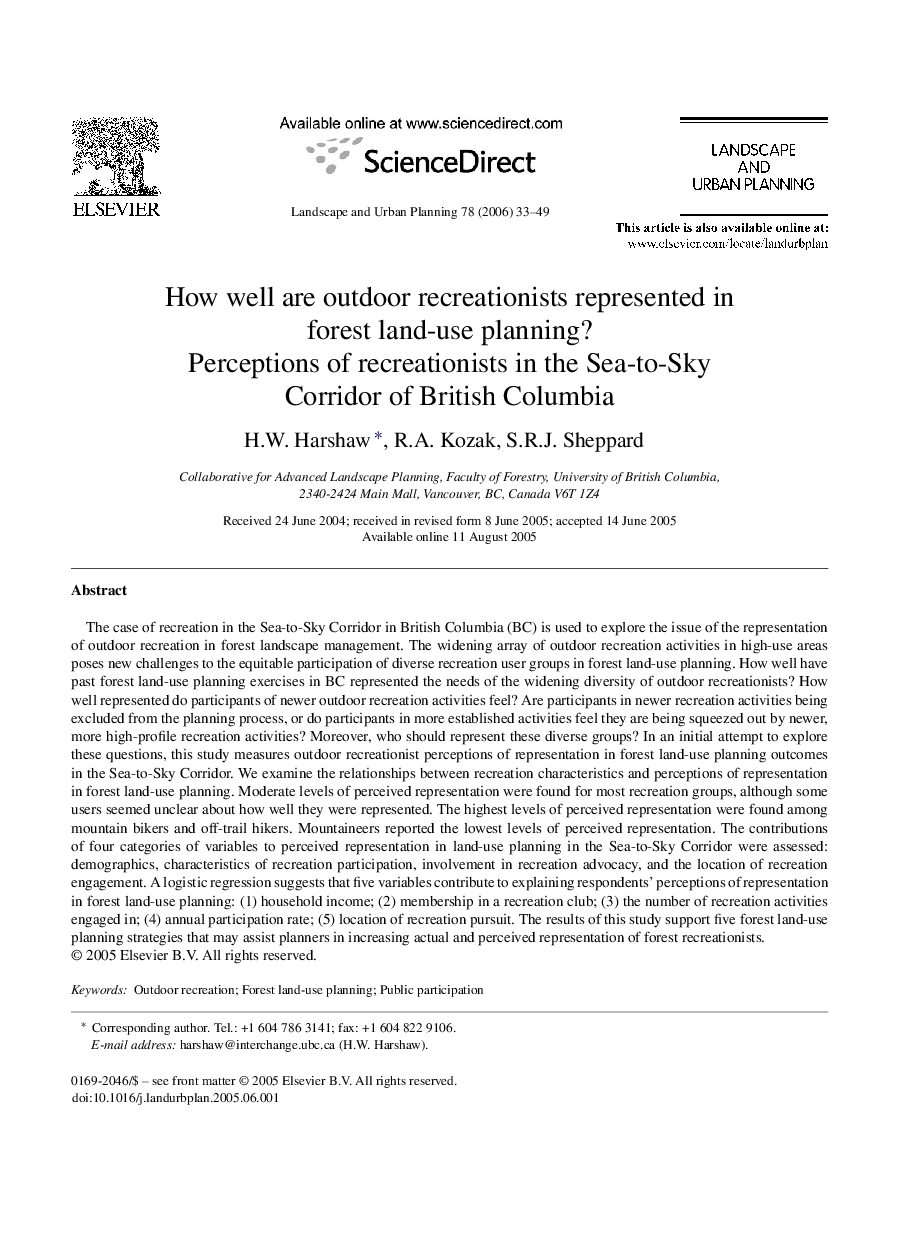| کد مقاله | کد نشریه | سال انتشار | مقاله انگلیسی | نسخه تمام متن |
|---|---|---|---|---|
| 1050754 | 1484675 | 2006 | 17 صفحه PDF | دانلود رایگان |
عنوان انگلیسی مقاله ISI
How well are outdoor recreationists represented in forest land-use planning?
دانلود مقاله + سفارش ترجمه
دانلود مقاله ISI انگلیسی
رایگان برای ایرانیان
موضوعات مرتبط
علوم زیستی و بیوفناوری
علوم کشاورزی و بیولوژیک
بوم شناسی، تکامل، رفتار و سامانه شناسی
پیش نمایش صفحه اول مقاله

چکیده انگلیسی
The case of recreation in the Sea-to-Sky Corridor in British Columbia (BC) is used to explore the issue of the representation of outdoor recreation in forest landscape management. The widening array of outdoor recreation activities in high-use areas poses new challenges to the equitable participation of diverse recreation user groups in forest land-use planning. How well have past forest land-use planning exercises in BC represented the needs of the widening diversity of outdoor recreationists? How well represented do participants of newer outdoor recreation activities feel? Are participants in newer recreation activities being excluded from the planning process, or do participants in more established activities feel they are being squeezed out by newer, more high-profile recreation activities? Moreover, who should represent these diverse groups? In an initial attempt to explore these questions, this study measures outdoor recreationist perceptions of representation in forest land-use planning outcomes in the Sea-to-Sky Corridor. We examine the relationships between recreation characteristics and perceptions of representation in forest land-use planning. Moderate levels of perceived representation were found for most recreation groups, although some users seemed unclear about how well they were represented. The highest levels of perceived representation were found among mountain bikers and off-trail hikers. Mountaineers reported the lowest levels of perceived representation. The contributions of four categories of variables to perceived representation in land-use planning in the Sea-to-Sky Corridor were assessed: demographics, characteristics of recreation participation, involvement in recreation advocacy, and the location of recreation engagement. A logistic regression suggests that five variables contribute to explaining respondents' perceptions of representation in forest land-use planning: (1) household income; (2) membership in a recreation club; (3) the number of recreation activities engaged in; (4) annual participation rate; (5) location of recreation pursuit. The results of this study support five forest land-use planning strategies that may assist planners in increasing actual and perceived representation of forest recreationists.
ناشر
Database: Elsevier - ScienceDirect (ساینس دایرکت)
Journal: Landscape and Urban Planning - Volume 78, Issues 1â2, 15 October 2006, Pages 33-49
Journal: Landscape and Urban Planning - Volume 78, Issues 1â2, 15 October 2006, Pages 33-49
نویسندگان
H.W. Harshaw, R.A. Kozak, S.R.J. Sheppard,